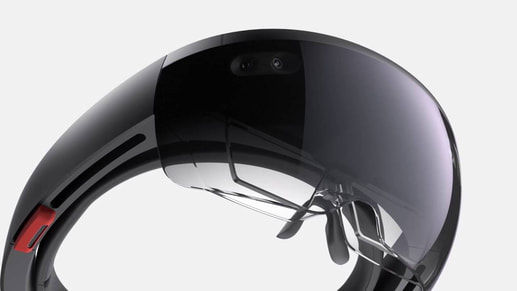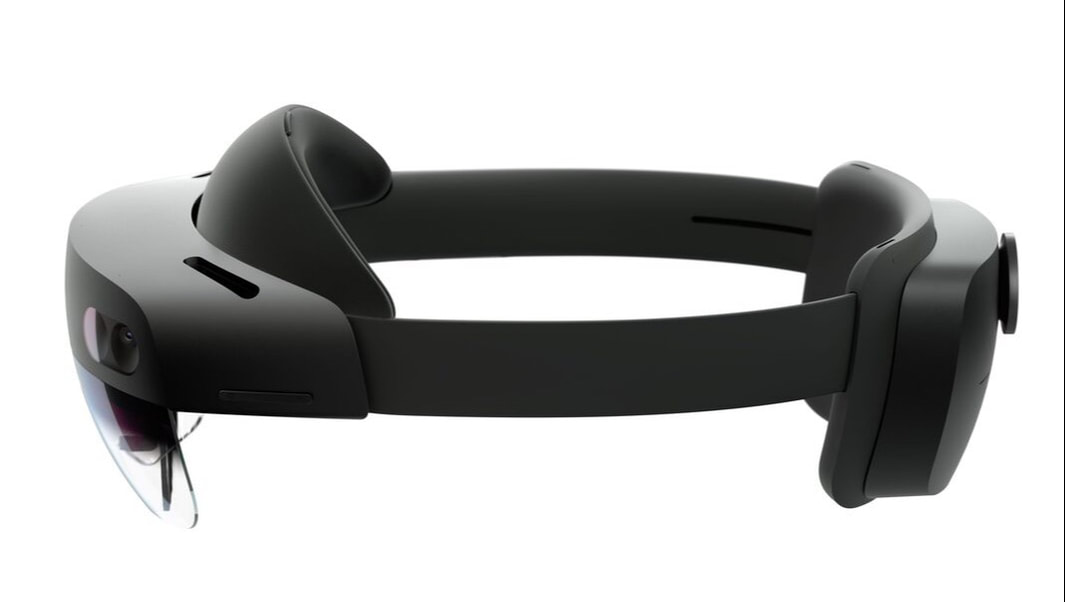Microsoft HoloLens
Developing a fully-contained augmented reality headset
For the past five years, I have been part of the architecture and, previously, the system integration electrical engineering team that shipped Microsoft HoloLens. The HoloLens is a head-mounted augmented reality device that overlays 3D content within the user’s perception of the physical world. It is mainly use in the enterprise space to streamline front-line worker tasks and visualize three-dimensional content. Inertial, depth, and image sensors processed through custom silicon provide for environmental understanding to generate a usable map of the surroundings and the user’s position within this map. Three-dimensional holograms are projected onto the user’s vision through waveguide optics. The device is powered by an onboard battery pack, which is good for about two to three hours of active use. It supports input through Bluetooth pairable HID devices, as well as speech and gesture input.
As part of the architecture team, my role has been to conceive, design, and manage incubation projects for mixed reality hardware, mainly around optics, display, and sensing technologies. I find interesting intersections between our HoloLens product roadmap and trends and breakthroughs in optics, display and sensing. I then specify and co-produce proof-of-concept demonstrations with internal partners and external vendors. Evaluating these demos, we then advise Microsoft HoloLens HW leadership team on strategic investment opportunities.
My former role was with the EE integration team. The team wove the device together electrically, working cross-functionally with mechanical, optical, silicon, battery cell, thermal, reliability, and DFX engineers. From an electrical engineering standpoint, designing an augmented reality headset presents novel and unique challenges. Within a compact, head-worn form factor, the device packs a multitude of sensors, compute, and power circuitry for fan-less, untethered, completely independent operation.
I’m passionate about working on HoloLens as it is at the forefront of what I believe will be a vast segment of mobile computing. Augmented reality headsets, in the short-term, will streamline workflows in many frontline industries, and in the long-term, provide a more intuitive way to interact with digital content for us all. As AR devices become more capable and compact, it could accompany, or even supplant, the smartphone as the ubiquitous gateway to the digital world. From a human-computer interaction perspective, AR provides a endlessly rich pasture for exploration and experimentation.
As part of the architecture team, my role has been to conceive, design, and manage incubation projects for mixed reality hardware, mainly around optics, display, and sensing technologies. I find interesting intersections between our HoloLens product roadmap and trends and breakthroughs in optics, display and sensing. I then specify and co-produce proof-of-concept demonstrations with internal partners and external vendors. Evaluating these demos, we then advise Microsoft HoloLens HW leadership team on strategic investment opportunities.
My former role was with the EE integration team. The team wove the device together electrically, working cross-functionally with mechanical, optical, silicon, battery cell, thermal, reliability, and DFX engineers. From an electrical engineering standpoint, designing an augmented reality headset presents novel and unique challenges. Within a compact, head-worn form factor, the device packs a multitude of sensors, compute, and power circuitry for fan-less, untethered, completely independent operation.
I’m passionate about working on HoloLens as it is at the forefront of what I believe will be a vast segment of mobile computing. Augmented reality headsets, in the short-term, will streamline workflows in many frontline industries, and in the long-term, provide a more intuitive way to interact with digital content for us all. As AR devices become more capable and compact, it could accompany, or even supplant, the smartphone as the ubiquitous gateway to the digital world. From a human-computer interaction perspective, AR provides a endlessly rich pasture for exploration and experimentation.
© Ishan Chatterjee 2023



